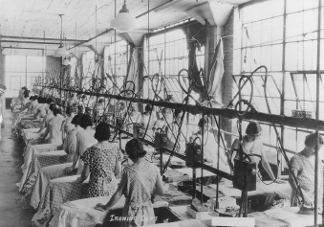CRANE, HART (21 July 1899-27 Apr. 1932), a modern, lyrical poet of the 1920s, was born in Garretsville, Ohio, to Grace Hart and C.A. Crane, millionaire candy manufacturer. In 1909, after his mother and father separated, he and his mother moved to Cleveland. Crane began writing verse at 13, publishing his first poem at 16 (1915) in Bruno's Weekly while attending East High School. He attempted a college education but was mainly self-taught. While writing and studying, he held jobs with advertising companies in Cleveland and served a brief stint as a PLAIN DEALER reporter. Moving to New York, Crane published poems in the small-press literary magazines Dial, Seven Arts, Poetry, and others. His first collection, White Buildings (1926), was well received. A wild life, including alcoholism and homosexual behavior, established him as a legendary figure. He traveled through California (1927-28) and Europe (1928-29). In 1930 he published The Bridge, his most famous collection, using the Brooklyn Bridge as a metaphor for American life and destiny, which won him critical acclaim and a Guggenheim Fellowship in 1931. In 1931, Crane lived in an artists' colony outside of Mexico City and worked on an epic poem about the conquest of Mexico, which he never finished. In 1932, Crane's depression, alcoholism, and the feeling he had lost his poetic powers led him to jump ship while sailing to America to settle his father's estate. His body was never recovered. His collected poems were published posthumously in 1933.
Last Modified: 15 Jul 1997 10:14:36 AM- Related Article(s)









